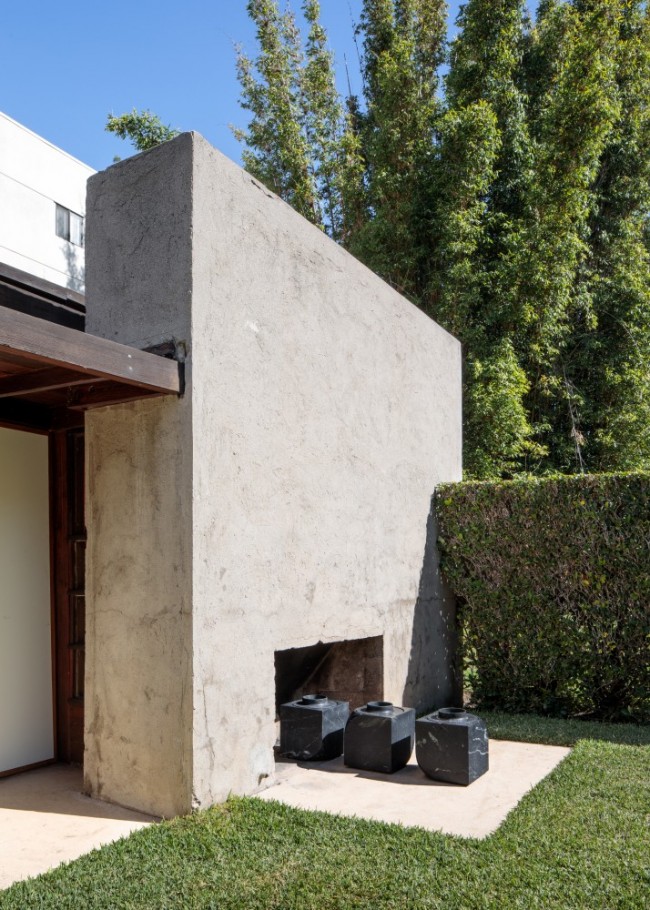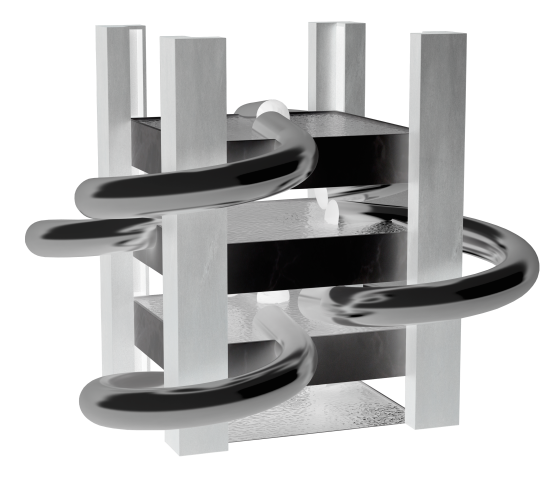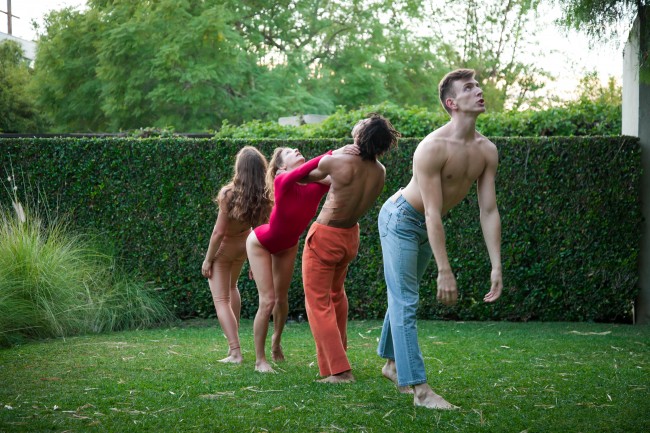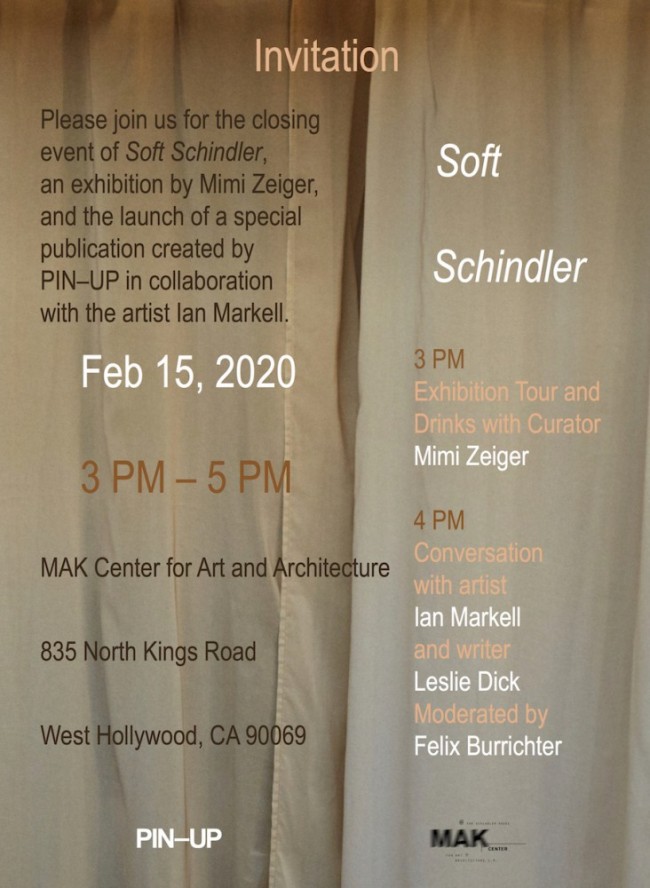LIVING WITH SCHINDLER: All The Angles
On the occasion of Soft Schindler, a design show curated by Mimi Zeiger at the MAK Center for Art and Architecture at the Schindler House in West Hollywood, PIN–UP and Zeiger invited artist Ian Markell and writers Leslie Dick and Susan Orlean to reflect on the exhibition and Rudolph Schindler’s architecture. The result is a pocket-sized publication designed by Erin Knutson functioning as exhibition catalog. Copies are available at the MAK Center.
-

Ian Markell, Soft Schindler: A Documentation, 2019. Page from a catalog for Mimi Zeiger's exhibition Soft Schindler, designed by Erin Knutson for PIN–UP and MAK Center for Art and Architecture at the Schindler House in West Hollywood.
-

Ian Markell, Soft Schindler: A Documentation, 2019. Page from a catalog for Mimi Zeiger's exhibition Soft Schindler, designed by Erin Knutson for PIN–UP and MAK Center for Art and Architecture at the Schindler House in West Hollywood.
-
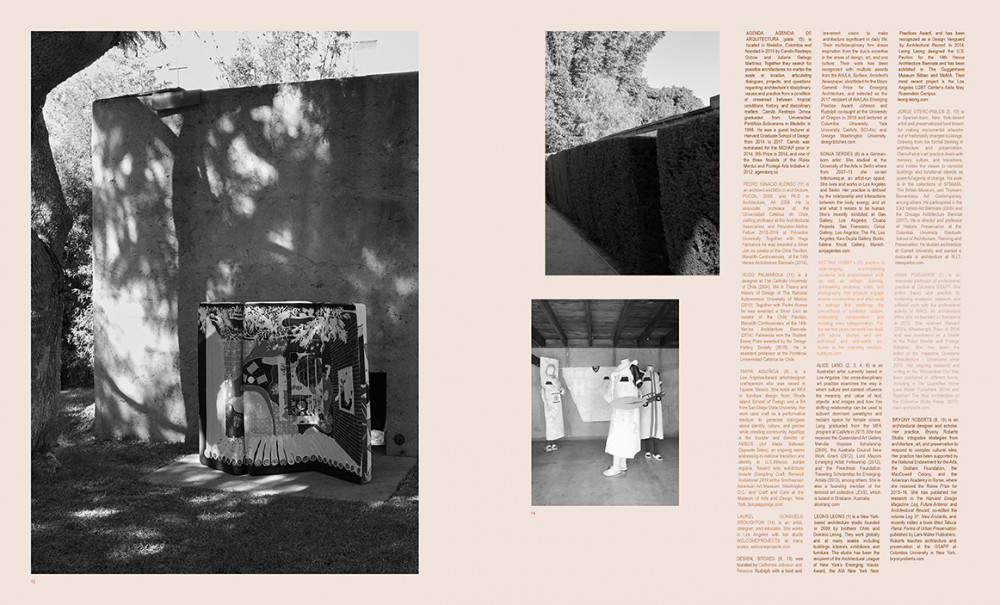
I always try to explain how it feels. It’s like being inside a jewel box made of triangles, I’ve tried. Or, it’s like living inside a math equation. Sometimes I just make it simple, and talk about how living in a Schindler house is like owning a piece of art, a large wooden sculpture, that also happens to include a kitchen and bathrooms and closets. But nothing I say ever approximates what the experience of living in one of these houses is really like, which is perhaps part of their genius and mystery.
Before I moved to California in 2011, I had never heard of R.M. Schindler. I was a lover of houses from the time I was a kid, but I was a mere architectural hobbyist, not at all fluent in mid-century modernity. The Ohio town I grew up in was full of beautiful 1920s Tudors and Georgians, forthright and handsome, with right angles and center halls. My whole family reveled in the pretty houses around us; my parents always drove the long way home, so we could ogle at them and pick our daily dream house as part of the drive. But the town had strict covenants against eccentric architecture — everything had to have two stories and follow certain traditional layouts — so I had no exposure to anything unconventional or original at all.

Ian Markell, Soft Schindler: A Documentation, 2019. Page from a catalog for Mimi Zeiger's exhibition Soft Schindler, designed by Erin Knutson for PIN–UP and MAK Center for Art and Architecture at the Schindler House in West Hollywood.
When my husband and I decided to move to Los Angeles, we began the soul-scorching experience of house-hunting, and we saw lots of bad slapped-up Italianate mini-palaces and tumbledown bungalows with terrible layouts. We despaired. One day, we saw a beckoning ad for a place in Studio City, a house with a name — The Roxy Roth Residence — designed by an architect we had never heard of, Rudolph Schindler. Our first glimpse of the house alone was worth the trip. It had a swooping, rounded prow that you could see as you drove down the block, and a long flank that met the street. It didn’t look like any house I had ever seen. The doorway was tucked away in the side of the place, and opened onto a foyer that gave no hint of what you were about to see. But up a flight of stairs, the house announced itself vividly, with a huge view of the Valley and symphony of wood and window that seemed to be in motion, as if the house were resolving into different shapes depending on where you stood.
-
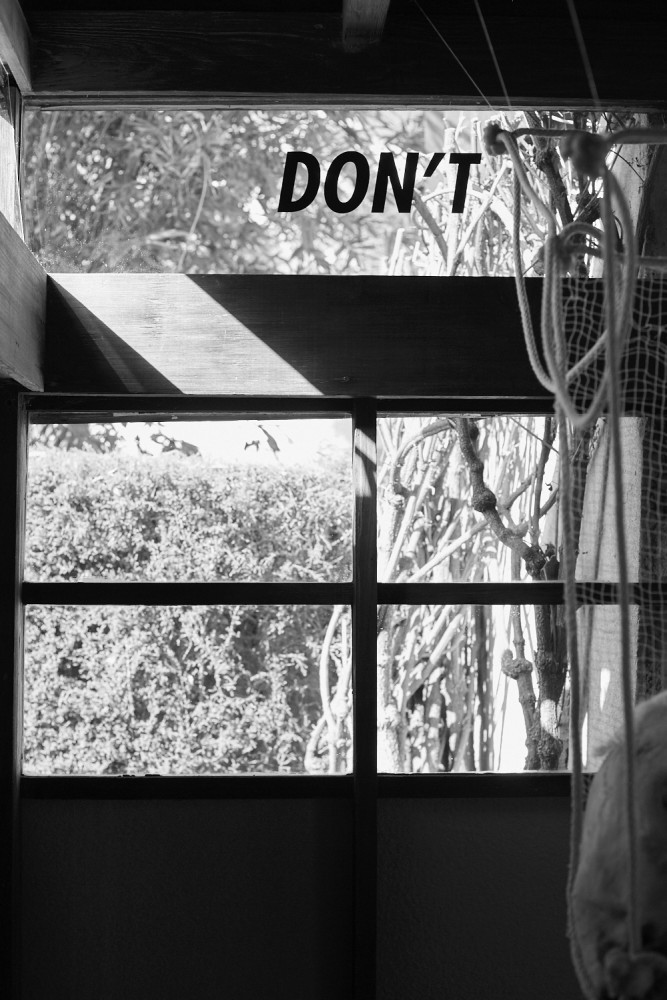
Ian Markell, Soft Schindler: A Documentation, 2019. Taken from the catalog for Mimi Zeiger's exhibition Soft Schindler, designed by Erin Knutson for PIN–UP and MAK Center for Art and Architecture at the Schindler House in West Hollywood.
-

Ian Markell, Soft Schindler: A Documentation, 2019. Page from a catalog for Mimi Zeiger's exhibition Soft Schindler, designed by Erin Knutson for PIN–UP and MAK Center for Art and Architecture at the Schindler House in West Hollywood.
We bought it on the spot, and it ruined us — that is, when we finally outgrew it, size-wise, and went looking for a little more room, every other house seemed static, dull, clumsy, and unpoetic compared to a Schindler. We gave up on the idea of moving; we were too used to being in a house that felt alive and melodic to feel at home in something orthodox. Then we heard about another house with a name, Schindler’s Kallis House. Like the Roth Residence, it had been built in 1946. Like the Roth Residence, and so many of Schindler’s houses, it offered a modest face to the street, and then dazzled you when you walked in, with a vertiginous, cinematic view of mountains and valley. Every room in the house held a surprise — angled walls, odd windows, tucked-away shelves, tiny desks built into corners. Every inch felt playfully orchestrated, as if Schindler wanted you to gasp with delight at each reveal. And maybe he was gasping with delight, too, as he was figuring out the house’s unusual and marvelous perspectives. We fell in love. Soon after we bought the house, we found a photograph of Schindler visiting it just after it was finished. The picture is faded but you can see that he is grinning merrily, as if the marvel of having made this singular building was striking him anew.
-
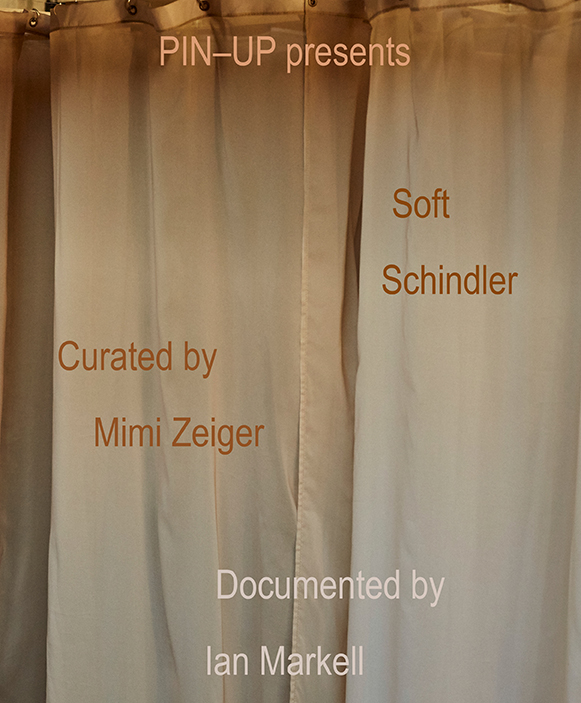
Cover of Soft Schindler, the catalog for Mimi Zeiger's exhibition of the same name, designed by Erin Knutson for PIN–UP and MAK Center for Art and Architecture at the Schindler House in West Hollywood.
-

Back cover of Soft Schindler, the catalog for Mimi Zeiger's exhibition of the same name, designed by Erin Knutson for PIN–UP and MAK Center for Art and Architecture at the Schindler House in West Hollywood.
We wrestled the house back into shape. It took two years. We had to find the wood that had been hidden by a dreary paint job, and re-slant the walls and windows that had been straightened up by a previous owner who had vertigo, and toughen up the foundation, which had cracked in half. But the essence of the house was always obvious. It is a play of angles; a variation on the theme of wood and window; a place full of teases and peekaboos and surprises; a meditation on details but also an embrace of the showy reveal. It is a work of genius on a human scale, managing to be dramatic and cozy at the same time. It is a stunning piece of art that is also gloriously homey and warm; grand yet utterly quirky. We wake up every day surprised by this house but also enveloped by it, enchanted by it, and honestly amazed that we have the good fortune to call it our home.
Text by Susan Orlean.
Photography by Ian Markell.
Taken from the PIN–UP special publication Soft Schindler, accompanying the exhibition by the same name curated by Mimi Zeiger.






